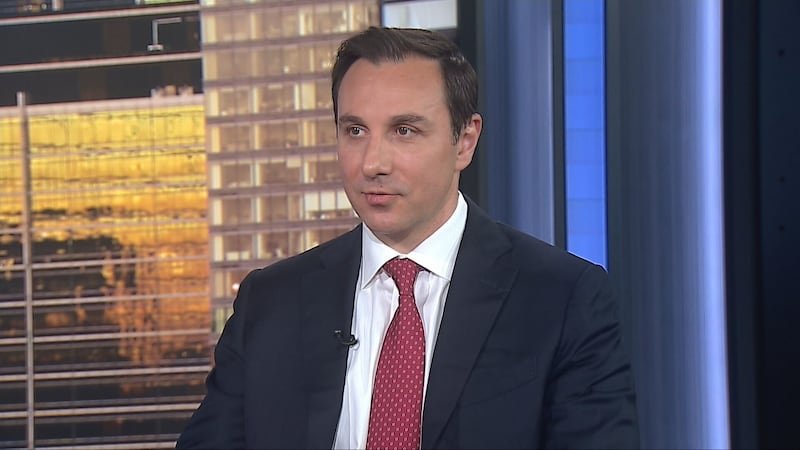The global stock rally paused as investors digested mixed economic signals and awaited key U.S. inflation data. Market uncertainty, high valuations and evolving rate expectations are prompting a growing interest in income-generating investment strategies.
BNN Bloomberg spoke with John Burrello, senior portfolio manager of the global strategies team at Invesco, about the surge in demand for option income ETFs, how investors can navigate risk in a volatile environment and the importance of thoughtful fund design in protecting returns.
Key Takeaways
- The option income ETF market is expanding as investors seek stock exposure with added income and lower risk.
- Canadian investors lead globally in using income-focused ETFs, but fund designs vary widely across products.
- Well-managed, non-leveraged option income ETFs can help investors weather volatility while maintaining equity exposure.
- Rising uncertainty, inflation and rate cuts are boosting demand for both gold and defensive ETF strategies.
- Investors are using income ETFs to stay invested, diversify globally and manage risk amid elevated valuations.

Read the full transcript below:
ROGER: The global stock rally stalled as investors weighed the potential impact of upcoming U.S. inflation data while parsing a flood of mostly positive earnings reports. Let’s get more on this from John Burrello, senior portfolio manager of the global strategies team at Invesco. John, thanks very much for joining us today.
JOHN: Thanks for having me.
ROGER: It seems like we have a mix of everything going on right now.
JOHN: There’s a lot of uncertainty in the markets today. If you look at U.S. stocks, for instance, we’re in the thick of earnings season. One notable trend is that last quarter saw a 16-year high in single-day moves for companies reporting earnings — on average, they moved about five per cent. We’re seeing a similar pattern now, where earnings are driving big swings in stock prices. That’s creating more volatility, and it’s leading investors to focus more on risk management.
ROGER: So what are your biggest concerns when it comes to volatility?
JOHN: Market concentration is a big one. The so-called Magnificent Seven continue to drive not just U.S. stocks but global markets higher. We’re now heavily reliant on a few companies to move markets. One way to manage that is through option income portfolios, which can help reduce that concentration risk. For instance, an equal-weight S&P 500 exposure can help spread out risk more evenly.
Another concern is valuations. It’s been a great run for equities, but by some measures — such as free cash flow yields — stocks look expensive compared to government debt. So while there are reasons to stay optimistic, it’s also important to prioritize risk management.
ROGER: How are you balancing all that? Where are you putting your focus?
JOHN: From our clients, we’re hearing two things. Some are concerned that markets have already run too far and want to take chips off the table. Others have been sitting on the sidelines and don’t feel it’s the right time to jump in with both feet.
Using options-based strategies can help bridge that gap. Traditionally, investors used bonds to offset equity risk, but that depends on correlations between the two. With options-based strategies, you don’t need that assumption — the protection is built right into the portfolio. That allows investors to stay invested while reducing risk and generating income. For us, the focus is on balancing participation, defence and income.
ROGER: Are we getting into bubble territory for the Magnificent Seven and the tech sector?
JOHN: It’s certainly frothy. I wouldn’t call it a bubble, but investors should remember that markets don’t always hit home runs like George Springer. It’s a good time to take some risk off the table and prepare for more subdued returns ahead. We don’t know how stretched valuations will play out, so again, risk management is key.
ROGER: Smaller gains are better than losses, right? Are you looking beyond the U.S. for opportunities?
JOHN: Absolutely. Our global equity portfolios — such as the Global Equity Income Advantage strategy — are designed to provide full diversification across regions. That helps reduce reliance on the big, AI-driven names in the U.S. We see regional diversification as an important risk management tool. Investors can add global exposure through thoughtfully designed option income portfolios that help smooth returns.
ROGER: Are there other markets that have outperformed the U.S.?
JOHN: Definitely. Markets such as Europe and developed international regions represented by the MSCI EAFE Index have performed well, even amid the uncertainty around tariffs and geopolitics. There are solid opportunities outside the U.S.
ROGER: And what impact are the tariffs having on your decision-making?
JOHN: Tariffs add another layer of uncertainty. Every headline seems to move markets in a different direction. We saw a major spike in volatility back in April around tariff fears, followed by a strong rebound when the outcome wasn’t as bad as expected. Now, with U.S.-China relations once again in question, we’re back in uncertain territory.
We can’t predict what will happen, but we can prepare. That’s where conservative option-based overlays help. Alongside our global strategies, we manage ETFs such as QQCI, which targets the Nasdaq-100, and EQLI, which offers equal-weight S&P exposure. Both allow investors to stay invested while taking some risk off the table and managing through volatility.
—
This BNN Bloomberg summary and transcript of the Oct. 21, 2025 interview with John Burrello are published with the assistance of AI. Original research, interview questions and added context was created by BNN Bloomberg journalists. An editor also reviewed this material before it was published to ensure its accuracy and adherence with BNN Bloomberg editorial policies and standards.

